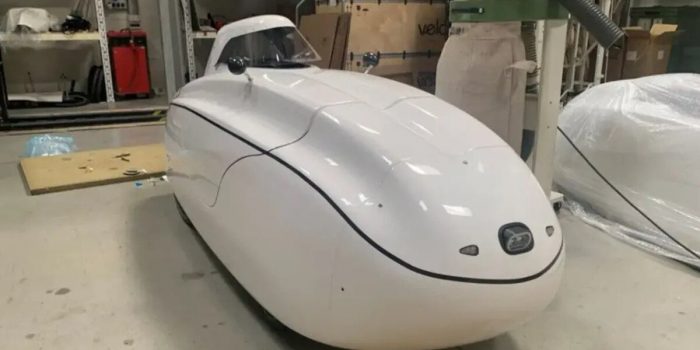In recent years, there has been a growing concern about the impact of human activities on the environment, particularly when it comes to climate change. As a result, people are increasingly seeking sustainable alternatives to traditional means of transportation that heavily rely on fossil fuels. In this race to reduce the carbon footprint, the concept of the ‘Velomobile’ has emerged as a promising solution, offering an eco-friendly and efficient way to commute and travel.
The Velomobile, essentially a bicycle car, is gaining renewed interest for its potential to contribute to a greener future. Unlike conventional cars, these vehicles are human-powered, utilizing the rider’s energy to propel forward. Furthermore, they come with an enclosed design that provides both aerodynamic advantages and protection from adverse weather conditions and potential collisions.
One of the primary challenges that have limited the widespread adoption of Velomobiles has been their speed. In real-world scenarios, practicality demands a certain level of speed that can cater to various use cases. However, recent developments are addressing this concern. Enter the VM45 velomobile, a pedal-electric quad cycle designed by Czech mobility company Katanga.

The VM45 boasts a top speed of 28 mph (45 kph), making it faster than traditional bicycles and more suitable for daily commuting and short-distance travel. Its aerodynamic body shell, composed of composite materials like aramid and carbon fibers in an epoxy matrix, contributes to its efficiency in achieving higher speeds.
Additionally, the vehicle’s relatively lightweight of 174 pounds (79 kilograms) and compact dimensions of 2850mm in length, 940mm in width, and 1050mm in height further enhance its agility and maneuverability.
The propulsion system of the VM45 is a chain-drive setup equipped with a 7-speed, auto-shifting, 750-watt Valeo motor/gearbox. This motor assists the rider’s pedaling strength and can even reach the vehicle’s maximum speed. It also features a reverse gear, adding convenience to parking and maneuvering in tight spaces. The motor is powered by a 48V/1,240-Wh lithium-ion battery, offering a range of up to 158 miles (255 kilometers) in eco-assist mode. This provides ample travel capacity for daily commuting needs and short weekend getaways.
According to the firm, the motor “multiplies the strength in your legs in such a way that you still feel that you are cycling and not sitting in a small electric car. The ride-feeling and the extremely stable cornering motivates you to ride sporty and pedal hard but you can also decide to ride relax,” said a blog post by Katanga.
The vehicle’s suspension system is equipped with DNM coil-spring shocks, providing 45mm and 60mm of travel in the front and rear, respectively. To ensure safe braking, the VM45 features drum brakes in the front and 160-mm disc brakes in the back. The rear disc brakes also double as parking brakes, adding an extra layer of safety.
To make it a practical option for any situation, the VM45 comes equipped with an electric horn and a full lighting system that includes headlamps, indicators, and tail lamps. This ensures visibility and safety during both day and night travel.
Considering the stringent regulations and testing processes required for vehicles with higher speeds, Katanga plans to offer a 15 mph (25 kph) model with a nominal 250-watt motor. This version would not require complex homologation, making it more accessible to potential buyers.
Additionally, the creators are exploring the possibility of offering a non-motorized version of the VM45, giving customers the freedom to choose the level of electric assist they desire. This flexible approach ensures that the vehicle caters to a wider audience with varying needs and preferences.
As for the pricing, the VM45 is estimated to start at €11,000 (US$12,108) for the pedal-only option, making it relatively affordable when compared to traditional cars. The motorized version, with its enhanced features and electric assist, may cost up to €13,000 ($14,310), providing a range of options to potential buyers based on their budgets and requirements.


